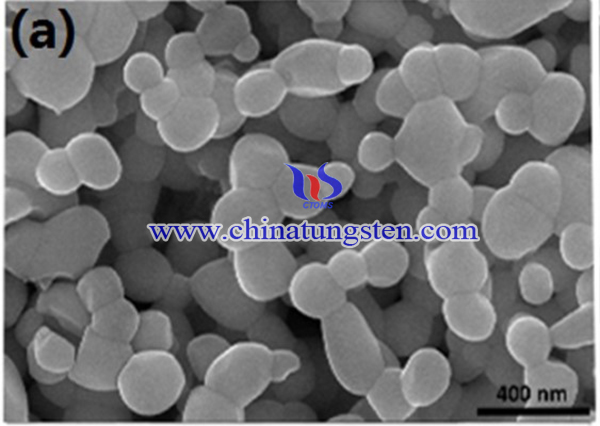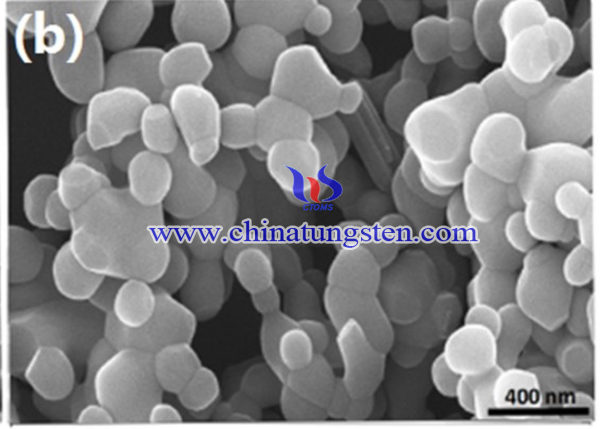W-Bivo4 Gas Sensing Material Using Ammonium Paratungstate
- Details
- Category: Tungsten Information
- Published on Tuesday, 06 April 2021 17:33
Trimethylamine is a hazardous volatile organic compound that originates from spoiled fishes and sea creatures and has negative effects on air quality and human health. The gas sensing materials based on metal oxide semiconductors have attracted considerable attention due to the advantages on high sensitivity, low-cost synthesis route and compatible with micro-electronic manufacturing technology.
The bismuth vanadate (BiVO4) with band gap of 2.4 eV as photoanode material for solar photoelectrochemical (PEC)water splitting has been widely investigated by various modifications to enhance its PEC performance. Thus, Tungsten (W) as an excellent metal oxide was doped into BiVO4 to increase electronic density and reduce band gap of BiVO4. Ammonium paratungstate (APT) was used as the tungsten doping material source. The as synthesized BiVO4 and W-doped BiVO4 gas sensing materials were characterized to compare the sensing ability to trimethylamine.

The fabrication procedure of BiVO4 and W-BiVO4 nanosized particles is as below:
Pure and W-doped BiVO4 nanoparticles were synthesized by the modified metal organic decomposition method. A typical procedure was given as follows: bismuth nitrate pentahydrate (Bi(NO3)3·5H2O) in acetic acid (CH3COOH, 0.2 M), vanadyl acetylacetonate (C10H14O5V, 0.03 M) and ammonium paratungstate (NH4)6W7O24·6H2O, 0.01 M) in dimethyl sulfoxide (C2H6OS) were mixed with 1 : 1 atom ratio of Bi : (V + W). The obtained precursor was sonicated 20 min then dried followed by calcined at 450 °C for 2 h with a heating rate of 2 °C/min. The samples with different atom ratios (W/Bi) of 0%, 4%, 6%, and 8% were obtained and named as BiVO4, 4W-BiVO4, 6W-BiVO4 and 8W-BiVO4, respectively.
The prepared sample was mixed with an appropriate amount of ethanol and coated on a small magnetic tube with a gold electrode. A Ni-Cr alloy wire for heating was put into the central tunnel of the magnetic tube to control the operating temperature of the sensor. The prepared sensing element was aged at certain temperature for a few days. The gas sensing tests were performed in a static state system to measure responses of the sample in different concentration of TEA vapor. The response of n-type semiconductor-based sensor to reduce gas is defined as Ra/Rg and Rg/Ra for oxidizing gases, where Ra is the resistance of the gas sensor in air and Rg stands for resistance of the sensor in the target gas.

In conclusion, the synthesis process of W-BiVO4 gas sensing material was proved to be a feasible route. the 6W-BiVO4 sample was the material with the best performance. the crystallite sizes of BiVO4 and 6W-BiVO4 were estimated by Scherrer’s formula to be 25.58 nm and 29.02 nm, the 6W-BiVO4 sample has the electron density of 3.22 × 1020 cm−3 that almost is 2.5 times higher than pristine BiVO4 (1.30 × 1020 cm−3). The enhancement of electron density for doped sample is important reason enhancing gas sensing properties of the composite, which has been confirmed by the gas sensing experiments. the main absorption edge of BiVO4 appears at 520 nm, while the band absorption edge of 6W-BiVO4 shifts to longer wavelength of 530 nm.
- APT Manufacturer & Supplier, Chinatungsten Online: ammonium-paratungstate.com
- Tungsten News & Prices of China Tungsten Industry Association: www.ctia.com.cn
- Molybdenum News & Price: news.molybdenum.com.cn
- Tel.: 86 592 5129696; Fax: 86 592 5129797; Email: sales@chinatungsten.com



 sales@chinatungsten.com
sales@chinatungsten.com